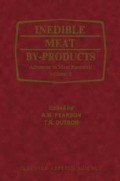Abstract
Soapmaking was documented on clay tablets in ancient Babylon in approximately 2800 BC. The Egyptians bathed regularly and Eber’s Papyrus dated about 1500 BC described combining animal and vegetable oils with alkaline salts to form soap-like material for treating skin diseases and for washing. The name soap supposedly came from Roman legend. Burnt animal sacrifices were made on Mount Sapo and the mixture of melted animal tallow and burnt ashes made their way to the banks of the Tiber River. This thick mixture applied to clothing enhanced the removal of dirt from laundry. The Romans were known for their famous baths and Galen the physician recommended soap both for medicinal and general bathing purposes. After the decline of Rome, poor hygiene and unsanitary living conditions contributed to the plagues of the Middle Ages. Gradually, soapmaker’s guilds appeared, with Italy, Spain, France and England becoming centers of soap manufacture. King James granted a monopoly to a soapmaker in England in 1622 for $100 000 a year (The Soap and Detergent Association, 1981). From that time forward, the desire for and use of soap has increased tremendously into modern times. As recently as 1989, riots broke out in the Soviet Union over the lack of soap and toilet paper.
Access this chapter
Tax calculation will be finalised at checkout
Purchases are for personal use only
Preview
Unable to display preview. Download preview PDF.
References
Anon. (1983). Continuous Fats Saponification Plant. Hitachi Ltd, Tokyo.
Palmquist, F.T.E. & Sullivan, F.E. (1959). A new approach to continuous soap making—Constant composition control. J. Am. Oil Chem. Soc.36, 173.
Schulerud, A.L. (1963). A review of several available continuous saponification processes. J. Am. Oil. Chem. Soc.40, 609.
Soap and Detergent Association (1981). Soaps and Detergents, 1st edn. Information Applications Inc., Rochester, NY.
Story, J.R. & Myers, E.G. (1983). Rapid Saponification Process. US Patent 4 397 760.
Author information
Authors and Affiliations
Editor information
Editors and Affiliations
Rights and permissions
Copyright information
© 1992 Elsevier Science Publishers Ltd
About this chapter
Cite this chapter
Myers, E.G. (1992). Soap and Detergents. In: Pearson, A.M., Dutson, T.R. (eds) Inedible Meat by-Products. Advances in Meat Research Series, vol 8. Springer, Dordrecht. https://doi.org/10.1007/978-94-011-7933-1_7
Download citation
DOI: https://doi.org/10.1007/978-94-011-7933-1_7
Publisher Name: Springer, Dordrecht
Print ISBN: 978-94-011-7935-5
Online ISBN: 978-94-011-7933-1
eBook Packages: Springer Book Archive

